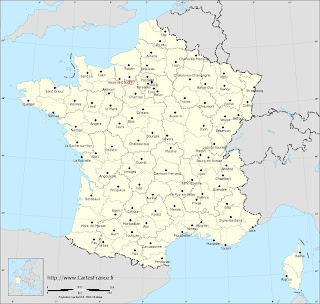 |
| Flowering fennel |
So what is fennel? It is an aromatic, perennial herb indigenous to the Mediterranean region but now widely grown all over the world that has culinary and medicinal uses. However, some consider it an invasive weed since it propagates well by seed and can be found in open spaces like pastures and along the road. I think the plant is quite elegant with its feathery leaves and umbrella like flowers.
 |
| Fennel |
If you are a licorice fan, you are probably already acquainted with it since it has a licorice flavor (like anise and star anise). I am a licorice fan. Not surprising it is a major ingredient of absinthe, a highly alcoholic beverage distilled from herbs. It is one of the herbs what gives absinthe its licorice taste (but not its psychoactive properties).
In addition, you can cook the bulb part of the fennel (great with salt, butter or cream) or eat it raw (great in salads). The leaves and seeds of the fennel plant are also used in cooking. If you've ever cooked Indian food, you may have noticed that fennel seeds were called for. Or, if you've ever eaten at an Indian or Chinese restaurant at the end of the meal roasted fennel seeds (sometimes sugar coated) might have been served as an after meal digestive or breath freshener.
Fennel is also purported to have a number of medicinal properties. It has been used to treat flatulence, airway inflammation, and colic, and it is thought to improve eyesight (some animal studies suggest it may be useful in treating glaucoma), and reduce hypertension. Of interest, Pline wrote about how fennel improved eyesight in the first century. Furthermore, powdered fennel has been used in kennels and stables as an anti-flea preparation.
In addition, the Greeks considered fennel a symbol of victory after their victory over the Persians at Marathon. The plain of Marathon was a field of fennel.
 |
| Florant and Melanie Maugeais of Les Ruchers de Normandie |
 |
| The red dot in the NW corner of France, showing Gisay-La-Coudre |
At Les Ruchers de Normandie, the Maugeais' label, they produce a number of different kinds of honey: acadia, linden, wildflower, and fennel, to name a few.
The fennel honey that I have won the 2013 Silver Medal from the Ministry of Agriculture and Food's General Agricultural Competition. This competition, which was created in 1870 and happens every year, is a big deal. Honey is judged in the Regional Products and Wine division. Producers are anonymous to judges and judges, who are regarded as experts in their fields, come from all over France to participate. Products, like honey, are obtained in the marketplace by anonymous buyers and then sent to the competition. It is the oldest competition of its kind in France and has many safeguards in place to minimize bias. Winners can label their products as medalists and have the glow that comes from knowing that their products are worthy.
The fennel honey is a deep amber color and slightly opaque. I thought it would be very thick because of the way it swirled in the jar but in fact it is a very thin honey and difficult to capture on a toothpick. It has no crystals or texture, just clear, thin honey. It has an extraordinary herbal, medicinal flavor with an undertone of molasses and a spicy aftertaste. I've heard it described as also having an almond, nutty flavor, but I think the herbal/spicy may overpower this.The aftertaste reminds me a bit of radish honey. It doesn't have any licorice taste at all. Quite lovely! Too strong for a delicate tea, too good to put in baking, but probably great on buttered toast or on crepes. Why it did not win Gold I'll never know. It is very unique.
You can buy this honey and other Les Ruchers de Normandie products on the Les Produits Normandie website. Well worth the bother!

